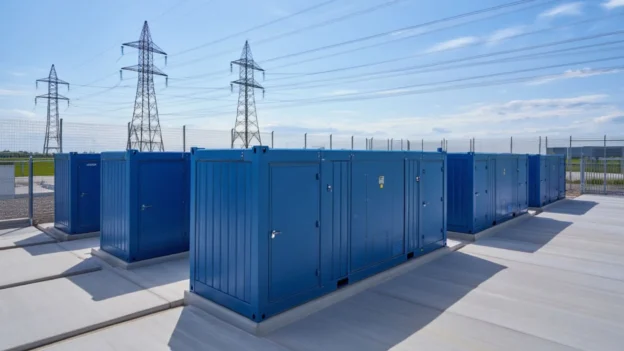Energy storage has experienced an unprecedented boost in Spain during the third quarter of 2025. According to data from the Renewable Energy Observatory, prepared by Opina 360, 64 new projects have been registered, with a combined capacity of 3,446.8 MW, a growth that multiplies by five times the figure of the previous quarter.
Castilla-La Mancha and Extremadura lead in energy storage
During this stage, Castilla-La Mancha was positioned as the region with the largest volume of storage with construction permits, highlighting a hybridization project with photovoltaic energy. photovoltaic energy 100 MW. In total, 298.8 MW
During the same period, 41 projects received a positive environmental assessment, totaling 1,408.7 MW. Most of them are oriented to independent battery installations or integrated into plants already in operation, although a pumping plant and a solar hybridization plant are also included.
April blackout marks turning point
The acceleration coincides temporally with the April blackout, which has been pointed out by experts as a catalyst for the urgent development of backup power capabilities.
Since April, there has been a clear intensification of storage projects, which are key to stabilizing the electricity system and boosting renewables.
Underlined Juan Francisco Caro, director of Opina 360.
Downstream generation projects
In contrast to the storage boom, renewable generation projects experienced a drop. Only 1,404.9 MW were approved for construction, down 40% from the previous quarter. Solar plants accounted for 79%, while wind accounted for the remaining 21%.
Between January and September 2025, there are 4,269.8 MW of capacity in storage projects that began their administrative processing. Galicia leads this segment, followed by Castilla-La Mancha, Catalonia and Aragon.
Rejection of projects on environmental and urban planning grounds
The administrations also rejected 2,124.5 MW in generation projects, mainly due to the expiration of permits or negative environmental reports. Aragón and Castilla y León were the most affected communities.
Spain is moving towards a more resilient energy system, where storage is beginning to consolidate as a strategic component in the face of the variability of renewable sources.
Source and photo: Opina 360

